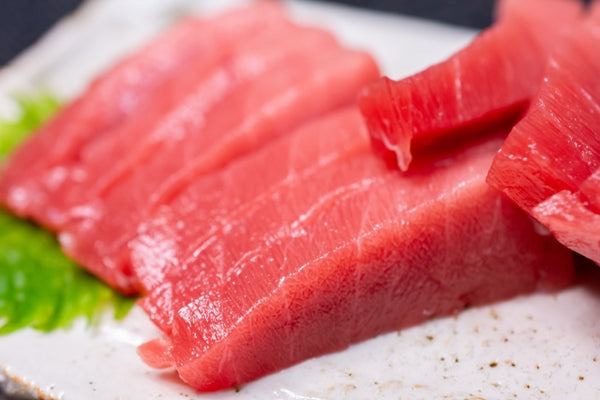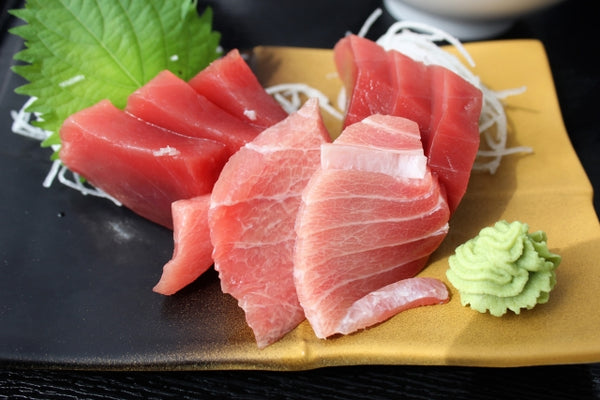Five Types of Tuna in Japan

Based on the small cuts that end up on your sushi plate, at 500 pounds, tuna fish themselves are much larger than you would perhaps imagine. Sushi masters cut the giant tuna into three main sectionsーfatty belly tuna (otoro), medium fatty belly (chutoro), and lean tuna (akami).
Five main types of tuna are sold in Japan, and each has a different taste, texture, and fat content.

Northern Bluefin Tuna
Northern Bluefin Tuna (hon-maguro) is the largest and most expensive type and has a high fat content. Cuts of this fish, especially from the fatty belly, are used for the highest quality sushi and sashimi dishes. When served raw, it has the firmness and appearance of beef steak.

Southern Bluefin Tuna
Southern Bluefin Tuna (minami-maguro) is smaller than Northern Bluefin but contains a higher proportion of fatty parts, making it the second most expensive type. Because it is caught in the southern hemisphere, it has a better taste in the summer, and so is the seasonal tuna of choice.

Bigeye Tuna
Cuts of Bigeye Tuna (mebachi-maguro) have distinctive, thin white stripes that run through the dark pink meat. This type of tuna is frozen immediately after it is caught, lessening its quality. However, since it can be easily delivered, it is often sold in supermarkets and conveyor-belt sushi restaurants.

Yellowfin Tuna
Yellowfin Tuna (kihada-maguro) is the most common type. It is rather low in fat, but lean cuts from locally-caught yellowfins are often served in regional sushi bars and have a very fresh taste. Also, it is often seared, blackened, cooked, or marinated.

Albacore Tuna
Albacore Tuna (binnaga-maguro) is the smallest and most affordable of the types. The color of its meat is pink and soft, so it is not suitable for sashimi. However, its fatty meat is used in conveyor-belt sushi and as a sashimi topping. Also, it is commonly used to make canned tuna.
Ready to try your hand at cutting tuna sashimi? Learn more in our blog: How To Cut Tuna Sashimi
About the author:

Jessica Craven is a writer, artist, and designer passionate about introducing aspects of Japanese culture to English-speaking audiences. Previously, she studied Japanese traditional art forms and Japanese art history at Akita International University, worked in art museums and galleries in the United States, and returned to Japan to work in Saitama for five years on the JET Program. She is fascinated by how traditional Japanese art forms, like tea ceremony, are also closely related to philosophy and health. She currently lives in Tokyo, where she is continuing her writing career.





3 comments
Thank you for the suggestion Joseph! We’ll look to create a blog about how to cut tuna for sashimi in the future.
i just want to learn different kind of cutting of the tuna,
i want to learn more cutting about tuna